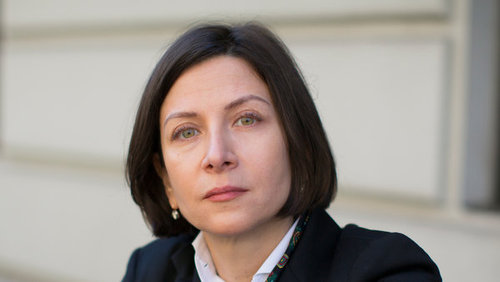
A Survey of Writers on Contemporary Writers
Listening to writers read and discuss their work at Newtonville Books, the bookstore my wife and I own outside Boston, I began to wonder which living, contemporary writers held the most influence over their work. This survey is not meant to be comprehensive, but is the result of my posing the question to as many writers as I could ask.
DONNA TARTT

© Julie Bosman
KELLY BRAFFET: When I was working on my first novel, Donna Tartt’s The Secret History was a huge influence on me: not just becauseit’s a wonderful book, but because she was a woman writing dark fiction thatskirted the edge of the thriller, which was, and still is, what I wanted to bewhen I grew up. In fact, her books so thoroughly skirt the edge of the thriller
that they completely circumvent the genre: in The Secret History, she tells you the identities of both the
murdered and the murderer in the first few pages, and in The Little Friend you never learn the identity of the murderer at
all. In essence, Tartt builds a stage set for a murder drama, and then gives
you something entirely different—
keeping all of that thriller-y tension,
atmosphere and excitement.
She did an interview when
The Little Friend came out where she
said—I’m paraphrasing—that she saw absolutely no reason why a well-written
book couldn’t also have an exciting story, and, being me, of course, I found
that incredibly inspiring and affirming. I look forward with longing to her
next novel, and everything else she writes.
LESLIE JAMISON: I read
Donna Tartt’s The Secret History and
wanted to write a novel just like it. I know I’m not the only one. I understood
it somewhat differently at the time, more obliquely: My first novel had been so
deeply grounded in character, I told myself—somehow both too much and too
little had happened—and this time around I wanted to approach plot with more
invention, more spirit of play. I wanted everything twining around the dark
matter of a mystery. I wanted to evoke the electricity and claustrophobia of
life on a campus. Tartt’s book was about a New England college; mine would be
about an all-girl’s boarding school in California. I had craft goals and mood
goals. My aesthetic sensibility was evolving and I was writing about it in my
diary.
But
really, it was like this: I’d fallen down the rabbit hole of The Secret History and I wanted to stay
underground. It was a mystery about getting lost in myth; it offered its own
mythology...
You have reached your article limit
Sign up for a digital subscription and continue reading all new issues, plus our entire archives, for just $1.50/month.
Already a subscriber? Sign in




